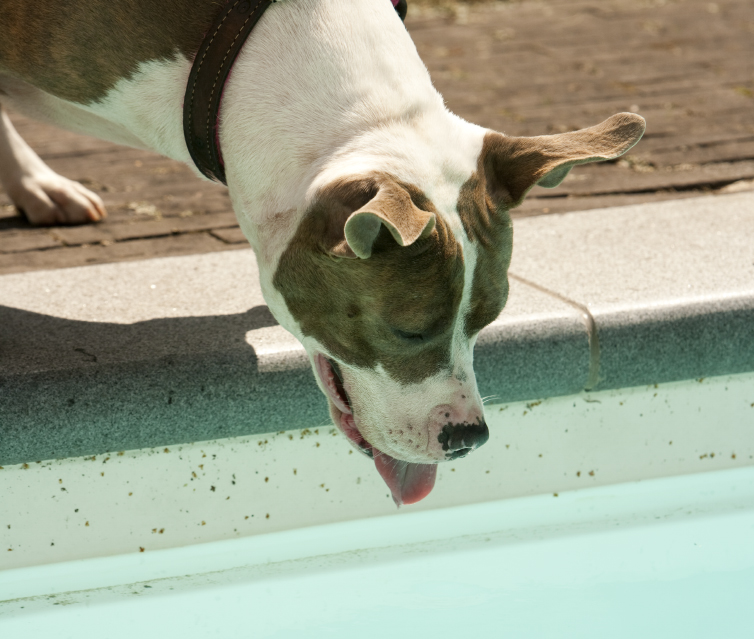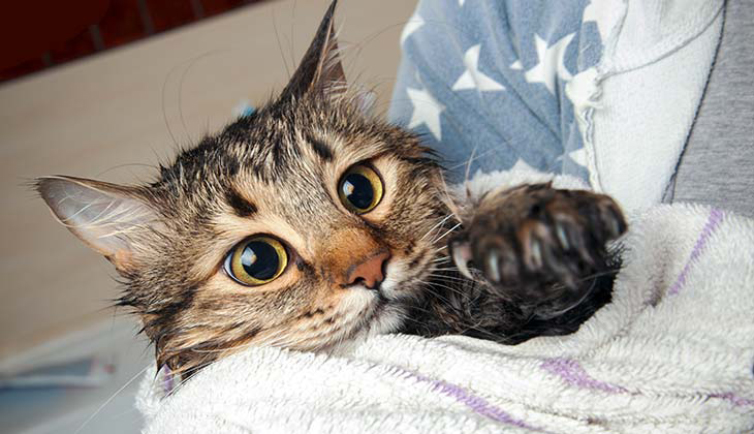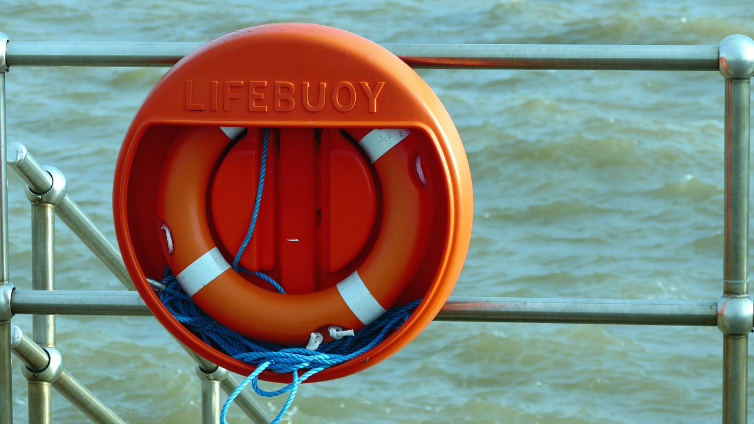Pools, Pooches and Purries!
Summer has arrived and there’s nothing more refreshing when you want to cool off than diving into a sparkling swimming pool. Many pets love to swim too, but not all of them. Most dogs, and even some cats believe it or not, enjoy a cooling dip when temperatures soar. However, as we are all aware, any body of water can pose dangers to humans and animals. There’s nothing to stop you and your pet from enjoying the water as long as you are aware of the dangers and the safety precautions you will need to put into place.

Remember to protect all your furry friends against ticks and fleas by using Bravecto® on your dogs and cats. Bravecto® Chews protect your dog for 12 weeks with one treatment. Bravecto® Spot-On provides 4 months of tick protection and 6 months of flea protection in a single dose.
Bravecto® Spot-On will protect your kitty from ticks and fleas for 3 months with a single dose.
First, a word about our purries …

As all kittie parents know, cats are extremely clever at most things, but we all know that a wet cat is not a pretty sight and it is usually accompanied by disgust, shock, embarrassment and the tendency to shred any human involved. The truth is, most cats can swim but that does not mean that most of them want to, apart from certain breeds like Maine Coons, Bengals and the Turkish Van. Most do not enjoy being wet and cold, and prefer their dense coats to be coated in their spit rather than water.
When you’re worrying about Mittens diving into your pool, … remember that cats are very smart so they tend to avoid things that they don’t like, including swimming pools. However, you cannot assume that, as with dogs, they are completely safe around large bodies of water.
Therefore, most of the following information concerning pool safety, also applies to your kitty.
The Good News: The Benefits of Swimming for Pets

‘Joy in motion’ is when you watch a Spaniel leap, ears flapping, into water, whether that’s a pool or the ocean. As we all know, exercise is vital for all living things and many of our pets are usually restricted to walks and lunging at people who pass the gate. Swimming provides a wonderful, enjoyable workout for poochie and for you.
Let’s look at some of the benefits…
- Swimming relieves stress. Pets are usually restrained, for their own good of course, but there’s nothing like the freedom and exhilaration of taking a swim. All living things suffer from some level of stress and anxiety. Our pets may get stressed when we leave them alone; when there are changes in their lives; when they are bored and when they are almost constantly confined. Swimming provides mental stimulation and allows them to release a lot of pent-up energy which relieves stress. Also, a tired dog will be relaxed and will sleep better.
- Swimming provides many health benefits, including improving circulation, decreasing inflammation, increasing metabolism and strengthening the heart and lungs. Because of the resistance of the water they will burn more calories and strengthen and tone muscles much more quickly, more effectively and more safely than other forms of exercise.
- Swimming, especially in warm water, can relieve joint and muscle pain in a safe and gentle way. It is non-weight-bearing and low impact. The water takes on a lot of your poochie’s weight and relieves the joints, which is particularly important for older and arthritic doggies and especially those recovering from neurological or orthopedic surgery.
Always consult your vet before putting any pet on a new exercise regime, especially old or sick furries.
- It provides very effective and safe exercise for those pets who may be a bit, or a lot, on the chunkie side. It effectively increases the metabolism and burns up calories without putting undue strain on the joints.
And of course, swimming with your pet is a wonderful way for you and your furry friend to bond.
O.K., so swimming is largely beneficial for pets and people but obviously there are some dangers and safety aspects which we need to be aware of.
Let’s try to address these concerns by answering some of your possible questions:
Can all dogs and cats swim?
Most of us assume that all animals can swim instinctively because … most of them can! However, many dogs and, of course, cats, are scared of the water and some in fact are simply unable to swim. For example, Bulldogs and Bassets cannot swim. Those with short snouts make it difficult to breathe if they try to swim. Most cats, as we have explained, dislike water and it would be very cruel to put them in a swimming pool. There are, of course, some cat breeds which love it. And remember that even if an animal is able to swim, it does not necessarily mean that they, as with humans, enjoy it.
Never, ever throw any pet in the water, even if it’s to ‘test’ to see if the animal can swim or if it’s a crazy attempt to ‘teach’ him/her to swim. It will not work; it will terrify and traumatize your pet and it will ensure that your pet never learns to swim. It is also very cruel.
What about those pets who dislike swimming but enjoy water to cool off?

In these cases, stick to shallow water. For example, you can use a plastic children’s pool, turn on a sprinkler or purchase a ‘doggie pool’ so that he/she can splash about and cool off in the heat.
How do I teach my doggie to swim?

This is a very sensible question: Thank you! If you have a swimming pool, whether fenced off or covered, there may be times when your dog either falls or jumps into the pool. It is therefore essential that your pet is as ‘pool-proofed’ as possible. The ability to swim (and to be able to get out of the pool) is vital.
Teaching Your Dog to Swim
- You should buy a doggie life jacket, especially for breeds like the Bulldog, who will sink like a stone (literally) if they aren’t wearing a jacket. These flotation devices are particularly important while poochie is learning to swim. If you are going to take him/her out on a boat with you it is also vital that your pet wears a doggie life-jacket all the time. Look for a snugly-fitting jacket but one which allows your dog to move freely. They are available online.
- Have a bowl of fresh water standing by. The less pool, pond or sea-water he/she drinks, the better.
- You are the life guard. Keep poochie on a lead while you are teaching him/her and never leave any pet alone in any water even for a few seconds.
- Baby steps! Start in the shallow end and walk with your poochie, who is wearing the lifejacket, slowly into the water, holding the lead. Walk slowly, backwards and forwards, praising, praising, praising. Remember: positive reinforcement works; punishment and shouting do not.
- Walk your doggie in and out of the pool several times so that he/she knows how to get out of the pool at the shallow end.
- As you constantly praise, walk your doggie slowly into deeper water. You can begin to support him/her under the stomach which will encourage your pet to start paddling his/her legs. Once your poochie is paddling with all four legs, you can slowly release your support, initially for a few seconds. If at any stage your pet begins to panic, slowly go back into the shallow water until he/she calms down. A terrified dog will be unable to learn anything and may develop a serious fear of the water.
- Show your pet how to get out of the pool by leading him/her back to the shallow end. (We shall deal with exiting the pool from deeper water later.)
- Rinse doggo with fresh water to remove any pool chemicals which may irritate his/her skin if they are left on.
- Praise, praise, praise! These lessons should be fun for both of you.
- You will repeat this lesson at regular intervals, increasing the time in the pool, until you feel that your pet is safe enough, paddling with all four legs, to have the leash removed. You must still supervise your pooch at all times.
I have a pool and I’m very scared of my pet drowning. How can I make my pool as safe as possible?

First and foremost: Supervise! Nothing can replace full adult supervision. Young children, who should of course also be supervised at all times, should not be made responsible for pool safety of pets.
Dogs and Cats: Pool Safety
- Install a secure fence.
Municipal regulations should be followed which govern pool fencing requirements. Ensure that the fence is installed securely and ensure that there are no gaps. Regularly check for any tunnels or holes which pets, or children, may have made. Ensure that no outdoor furniture is up against the fence.
- Install a pool cover (in addition to the fencing).
A floating or skimpy net cover will not be effective. A strong vinyl/plastic cover should be properly installed, which is attached to the pool surround with special clips which are permanently screwed in. These covers are easy to remove and replace when required.
- Pet alarms.
These are not as effective as fencing and covering the pool. There are many types available, including those which are attached to your pet’s collar. If he/she falls in, an alarm will sound from a panel in the house. There are also pet and child alarms available which monitor the pool for movement. They activate and sound an alarm when anything enters the pool.
- Steps and Ramps
Pets cannot climb ladders to enter and exit the pool. If you are building a new pool and have pets (and/or children), it is a good idea to build in steps/stairs or a ramp to enable them to easily get into and out of the pool. Dogs should be trained to use them, otherwise they may try to desperately get out of the pool by getting to the edge, frantically try to get out and eventually become exhausted. This process may be almost silent and you will not hear it.
Ramps especially for pets, are available online, and also devices which clip permanently onto the side of the pool, enabling the pet to get out. Again, they must be trained to use them.
What do I do if my pet has fallen into the pool and is unresponsive?

Be Prepared:
Ideally, you should ask your vet to help you with instruction on how to perform CPR on animals.
There are videos on YouTube which give clear instructions on how to perform CPR (cardio-pulmonary-resuscitation) on dogs and cats. You need to be familiar with this skill before an accident happens as speed in these cases is vital. Here are some suggested videos:
For dogs: https://www.ProPetHero.com
For cats: YouTube First Aid for Life – cat unconscious
There are also online courses available.
This is a very frightening situation for you to deal with, but you must try to stay as calm as possible and take the vital action quickly. If there is someone with you, enlist their help and tell them how to help you. If you are alone, you may still save your dog’s or cat’s life if you follow these steps.
These instructions are very basic and generic. You should have proper instruction in order to perform CPR on an animal or indeed, on a human.
- Clear all water out of the airway.
Hold small dogs, puppies and cats upside down to prevent any water from reaching the lungs. Lie large dogs on their side and raise the body above the head to allow the water to drain out of their mouth and nose.
- Check for pulse.
Either listen for a heartbeat by putting your ear on their chest or place two fingers on the upper part of their inside leg. If there is no pulse, apply CPR to your dog or cat.
- Check for breathing.
- If there is a pulse but no breathing, extend the cat’s or dog’s neck to open his/her airway.
- Close their mouth and cover their nose with your mouth.
- Breathe into your dog’s nose until their chest rises.
- Continue until your dog breathes on his/her own.
- Wrap your pet up warmly in a blanket.
- Get your dog/cat to the vet as soon as possible, whether he/she is breathing or not. Your vet will need to check your pet out thoroughly.
- If someone is driving you to the vet and your pet is still not breathing, continue with resuscitation if possible.
It is obviously important to be prepared. Accidents can happen in the safest homes and to the most vigilant people. If you know what to do and how to do it, you will feel much more confident in the case of a doggie or purrie emergency.
And finally …
Enjoy the hot summer days spent with your beloved pets! Your quality of life and theirs will be much improved by spending this special time together.
The good news about using a product like Bravecto® Chew for tick and flea protection for your pooches, is that it is unaffected by swimming. Your pup can be treated and swim immediately. Great for the water babies out there, yes we are talking to you Labradors!!
The Bravecto® Spot-On products will need 72 hours from application to be fully absorbed which means no swimming for a short period of time, but after that it is also unaffected by swimming or shampooing.
Sources:
thediscerningcat.com – Can Cats Swim?
topdoghealth.com – The Top 5 Benefits of Swimming for Dogs
vetwest.com.au – Swimming Pools in Your Backyard – pet safety
ZA-NON-230100001

Subscribe to our Newsletter
Get to know your furry friend better! Sign up for all things dog- or cat-related.
The Hairy Facts about the dreaded hairball
12 April 2021
Help! My dog’s barking mad! Volume 2
12 April 2021
Your Itchy, Scratchy Cat – All About Cat Skin Problems
12 April 2021
The Dog’s Diet: A Bone of contention?
01 April 2021
Mango Fly Worms: How to Spot and Eliminate them
Posted on November 28,2019
Managing Mange And Mites In Your Dog
Posted on June 11,2018
Why Do Cats Purr and How? Learn What Your Cat Is Saying
Posted on October 14,2020
How to Get Rid of Ear Mites in Dogs
Posted on November 06,2019









